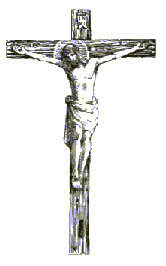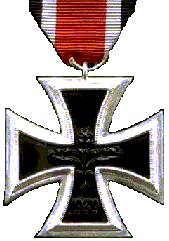The Maltese Cross - a sinister design?

The Cross Pattée

The true
Maltese Cross

The cross is a symbol adopted to remind Christians of our Lord's saving death - and with an empty cross his resurrection! Otherwise it is a quite neutral symbol, often in its form of equal sized arms, used in art due to the symmetry of design. Even as used by Christians, Christian artists have been inspired to produce many variations on the theme. Christian countries used the cross as the main symbol of decorations awarded to those who served the nation.

Greek Cross
The Cross was also used to show a sign of commitment to fight against the Muslim world, which had with great vigour conquered former Christian territories. Whilst the west is criticised for the Crusades, it must be remembered that Islamic nations expanded their territory and overran the Christian East. It was through the counter-attacks known today as the Crusades, that the cross was adopted by the Crusaders.

Crusader's Cross

Cross as used by the Order of St John in the 1200s
The Hospitaller's Cross.
Following the first crusade, a Hospitaller Order which as a Christian Order had adopted a simple form of the Cross (the Greek cross). This Order based in Jerusalem took on a military wing to defend Christians, and as the Order developed, its hitherto plain cross became more ornate in form. Specifically this is how the Cross today known as the Maltese Cross began its development.
Many people refer to various forms of crosses as the "Maltese cross", but most are only crosses formée, or crosses pattée (a thicker form of cross with definite fluted arms) with a variant form in the pattée formée (almost four triangles in square formation) - such is the form of cross often used by the Fire service in the USA. The true Maltese Cross is described above as "a cross of made from four straight lined pointed arrowheads, meeting at their points, with the ends of the arms consisting of indented 'v's".

Present Day
Maltese Cross
The answer to the question of whether the Maltese type Cross (of which the Cross Formée, Cross Pattée and the variant form in the Pattée Formée form examples), represents the sinister, is that the cross is quite neutral.
The Cross has been so successfully used by Christians, and specifically by
Christian nations that its more sinister use by others, then casts a shadow
on its use by Christians. It is suspected that if the Church been founded
by our Lord in this day and age, and he had mounted the cross for our sins
today - we would have made a "trade mark" of the cross in its varied forms
and thus secured it only for Christian use!
Prussian Iron Cross 1813

The tradition of the Iron Cross (which was Cross Pattée in shape) had an honourable beginning, when it was instituted as a Prussian decoration, in March 1813, by King Friedrich Wilheim III during the War of Liberation against Napoleon. It was awarded without regard for nationality or social class to combatants for acts of heroism, bravery or leadership skills.

The defeat of Germany in that war did not diminish military pride, and the Iron Cross awarded for recognised valour continued to be a symbol of prestige in the inter-war years. In the opening hours of World War II, Hitler re-introduced the Iron Cross on the 1st September 1939, to invoke the imagery of the gallant Prussian warriors, the great victories of the Bismark era, and the brave soldiers of World War I. On the reverse side of the Nazi Iron Cross was the date 1813, recalling the former Cross of a nobler era. Superimposed on the centre of the Cross re-introduced by Hitler was the Nazi swastika. Through the evil purposes which unravelled as Hitler continued in power, the Iron Cross became identified with a more sinister purpose.
Following the end of the Second World War the Swastika was outlawed and its public display prohibited, this included all military and political awards that included this symbol.
However, some time after the War, in1957, in West Germany, legislation was passed to allow those who earned the Iron Cross in World War II to once again wear it, this time with all vestiges of Nazi symbols removed. This law signified that the Iron Cross was an award for Military bravery and not a political award, and those who continue to wear it, do so, indicating true valour.


Sadly continuing the sinister dimension of the Iron Cross is the that this symbol is often displayed by neo-Nazi groups, especially as pendants. The Iron Cross without the swastika is also frequently used as a hate symbol in the same manner as the Nazi-era Iron Cross.

The Cross as used in the Christian West, is a reminded of our Christian inheritance. It was used by the Crusaders for a religious military purpose, which was seen as noble. The medals and decorations used by the various Christian nations used the Cross to evoke the idea of a noble Christian ideal. It is a Christian symbol commemoration the death of the Lord Jesus Christ on the Cross. The irony is that the neo-Nazis/white supremacy movement use the Iron Cross without stopping to think that our Lord was a Jew!


If for any reason the Cross Pattée is an ideal shape for a symbol try getting away from the colour of black - for example the red Cross Pattée evokes images of the Knights Templar.
